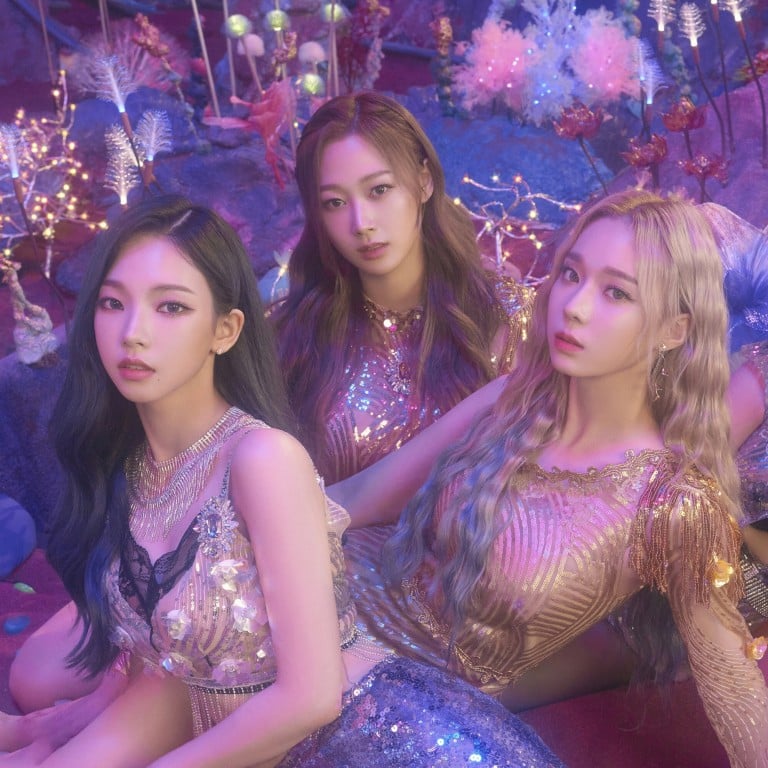
Haute couture designer, K-pop costume creator: Aespa’s debut stage outfits and Kay Kim, the woman behind them
- To create the girl group’s stage outfits, Kim met with the band members to hear their expectations, and listened to their debut song many times
- Kim, educated in Seoul, Paris and London, has created outfits for A-list stars such as Lee Young-ae, Lee Hyo-ri, Kim Hee-sun and Lee Ha-nee
Last year, haute couture designer Kay Kim received an unexpected phone call from Lee Soo-man, the founder and chief director of SM Entertainment.
SM, one of the big four entertainment agencies in South Korea, along with JYP Entertainment, YG Entertainment and Big Hit Entertainment, was about to unveil girl band Aespa. It was the first time in six years that SM was launching a new girl band.
The “international K-pop act” – made up of a Japanese, a Chinese and two Korean girls – drew keen attention from the media even before its official November debut, partly because each member had a digital avatar counterpart.
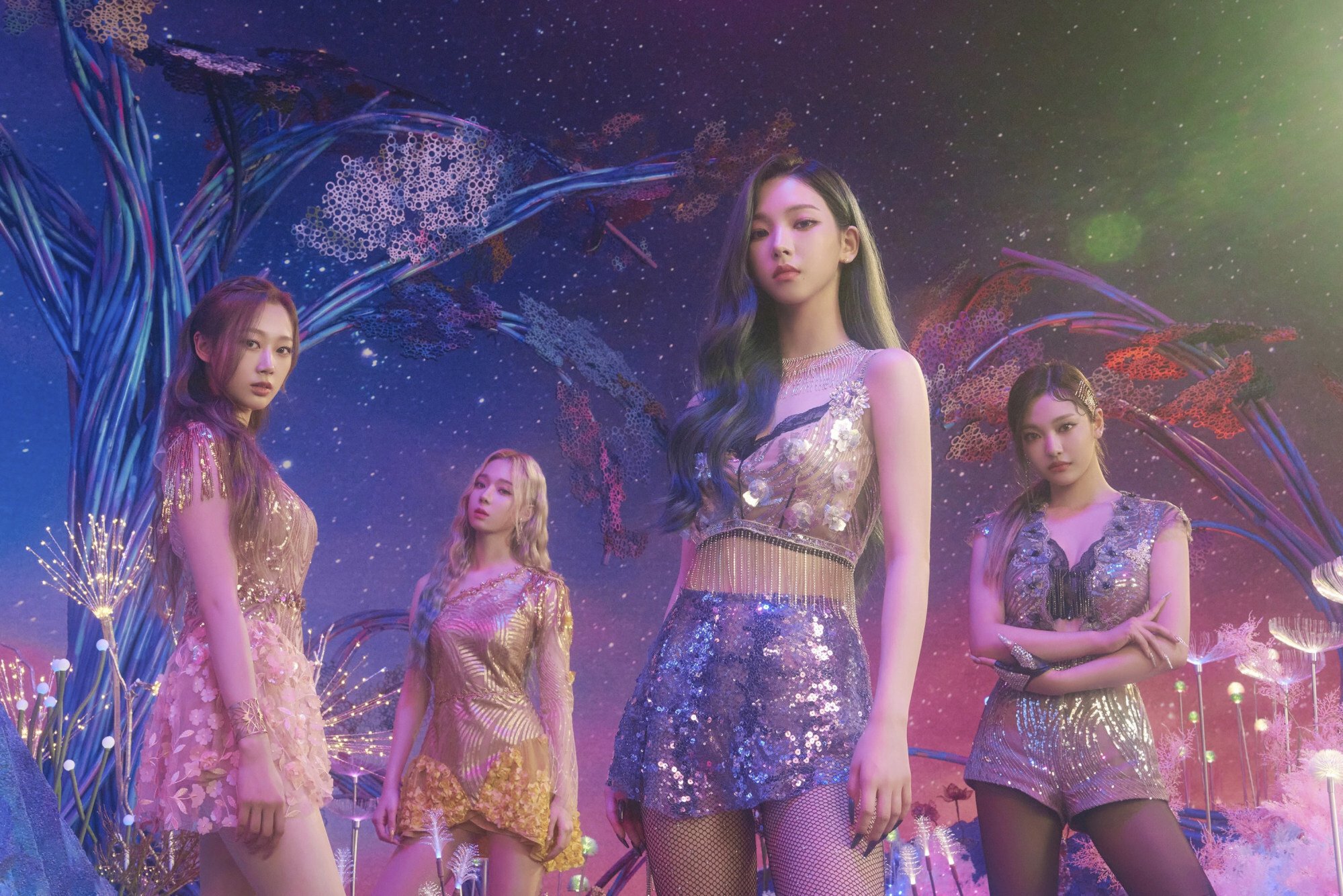
On the call, Lee asked if Kim would be willing to join the Aespa project as a designer.
“I said, ‘Why not?’,” Kim recalled during a recent interview at her shop in Seoul. She didn’t think twice about accepting Lee’s offer because she knew it would be challenging and rewarding.

“I was asked to come up with artistic and haute couture-like costumes [to] create the image of Aespa who is new, artistic and unique. I accepted the offer on the spot as I found the concept of the girl group interesting, especially the avatar thing, as it reflects the current era where people in the real world interact with a virtual world. I was intrigued by the fact that it was a project about the future of people,” Kim said.
Lee wanted each of the members to be portrayed as chic, stylish and gorgeous – next-generation warriors dedicated to saving the world from a fictional villain called Black Mamba. For Kim, the problems that came with designing outfits for a digital-era girl band were greater than she initially thought. It was like trying to create something out of nothing, and the designer had to work under a time constraint as the clock was ticking down to their debut.
Kim squeezed in several meetings with the band members to listen to their expectations and to get an idea of their stage costumes. She also listened to their debut song many times. Working with the girls for their much anticipated stage debut was a once-in-a-lifetime experience. Kim said, even though the SM girl band project was very different from what she had done in the past, she had a lot of fun during the entire process.
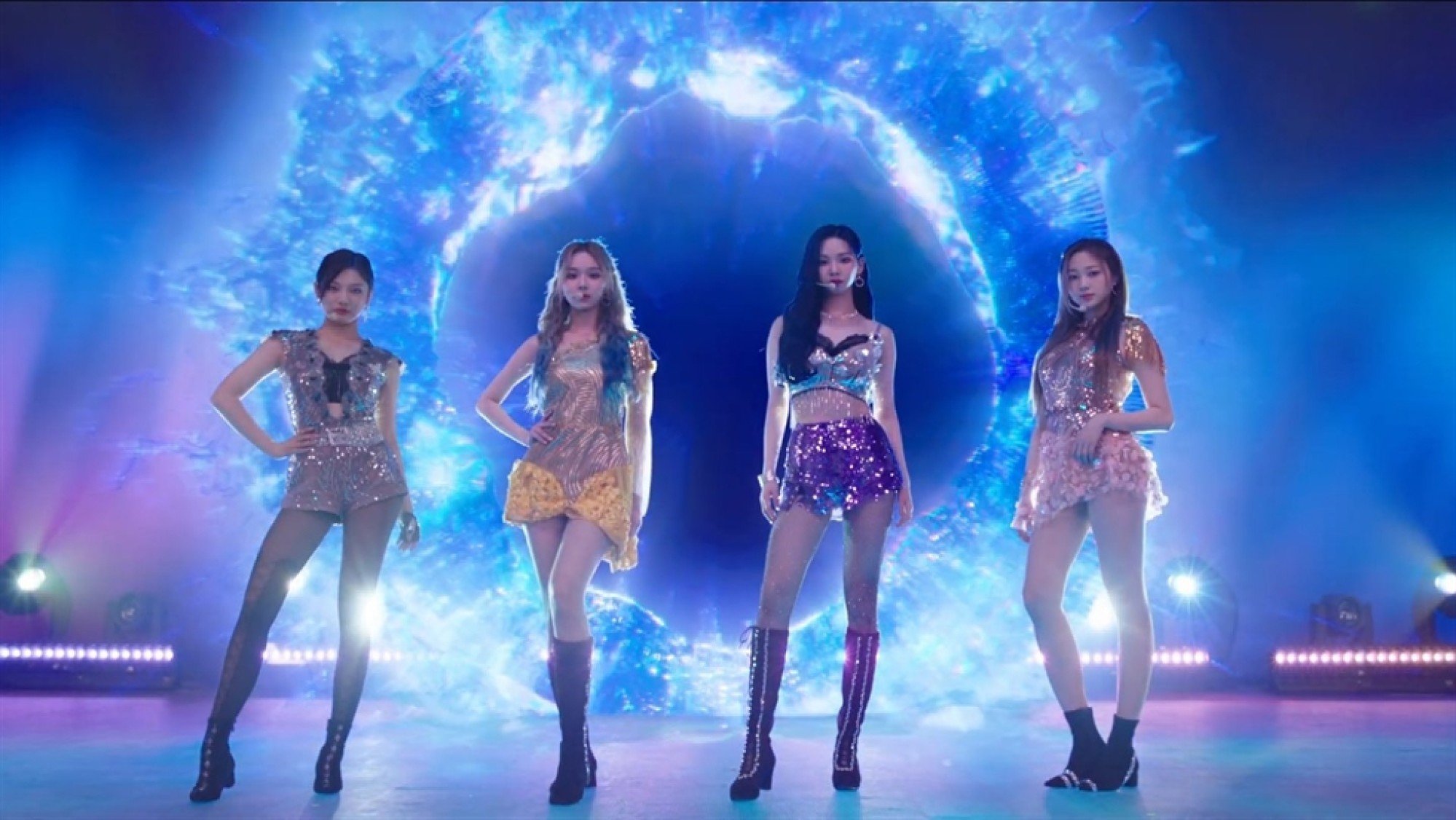
Kim’s career has involved discovering clients’ demands through consultations and coming up with elegant dresses quickly, while also keeping an eye on the latest trends and cultural differences. A large portion of her work style has been cultivated through her education and professional career in major cities like Seoul, Paris and London. This experience has helped her create a unique brand appealing to Koreans and non-Koreans alike.
“It takes more time for a haute couture designer to become successful compared to designers who make ready-to-wear dresses,” Kim said. “But I fell in love with the beauty of haute couture fashion, which is the top of the fashion pyramid.”
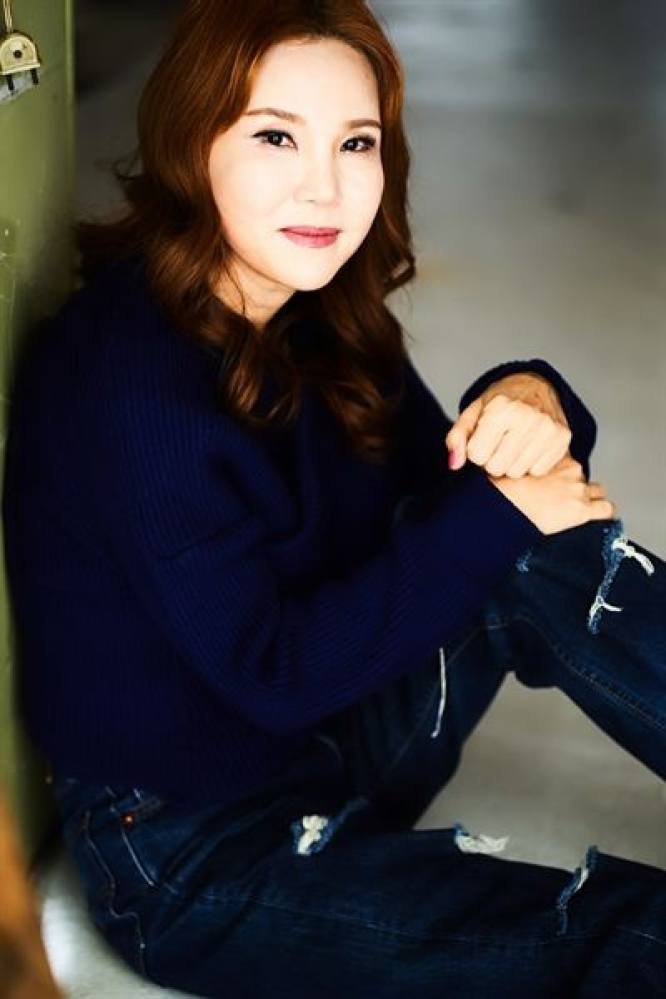
Growing up, Kim said she was a bookworm and a hard-working student who never knew how to enjoy life. This dedication even ended up making her sick.
“When I was in Paris, I was obsessed with winning first place in school. I thought I needed to study hard and be the best, because my parents paid a lot to educate me in France. So I didn’t get much rest and simply spent my time only in school, museums and art galleries even on weekends. After one-and-a-half years there, I started to faint every day even though I had no clear health problems. I was seriously thinking of quitting fashion because of [this].”
Her doctor and instructor told her that she was working too hard, and encouraged her to have fun. Although she initially didn’t believe it, she came to the realisation that she may have fallen sick because she wasn’t enjoying the process and had forgotten why she loved fashion and clothes.
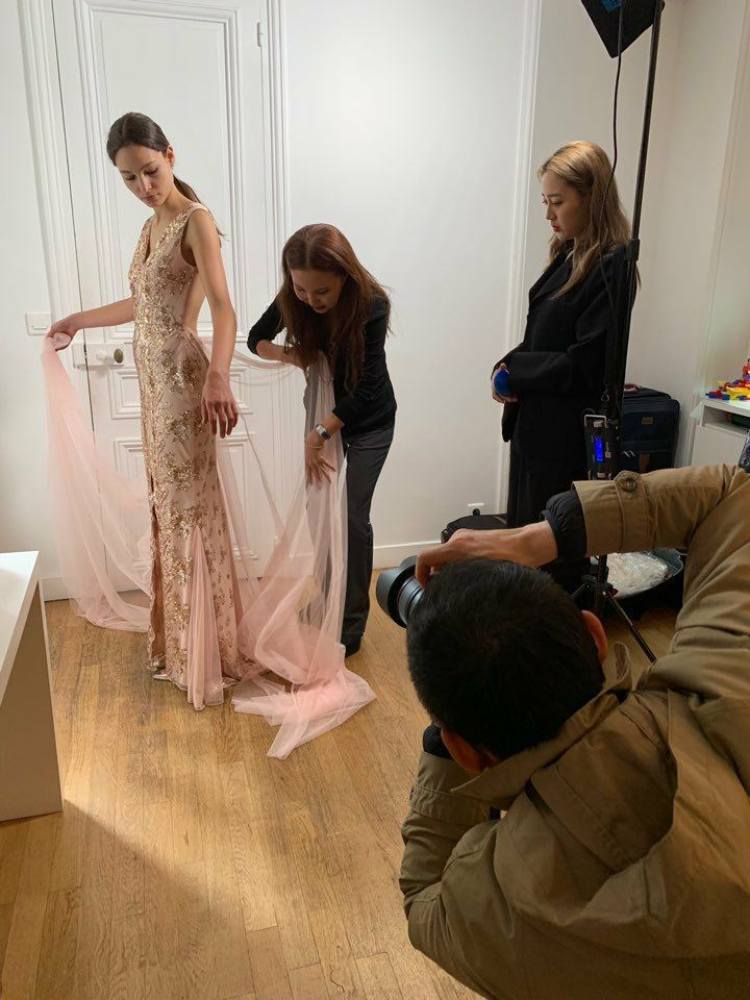
“Apart from me, who was narrow-minded and only aimed to be No. 1, my schoolmates chose fashion because they just loved it. But I realised I love fashion, too. I never get tired when looking at clothes. I was excited to go out even just to window shop when I was sick.
“After that, I travelled and had a good time with friends without thinking about becoming the best fashion designer. I gradually became healthier again, and was good at school and work, too.”
After several years of working as a freelance designer in Paris, she came back to South Korea in 1993, where she designed and sold haute couture at Kay Kim Boutique.
Kim tries to highlight her clients’ natural beauty by consulting them often and considering their position and background. She does not take an order without meeting a client first, as she wants to learn about their lifestyle and personality. It takes around two weeks (it depends on the individual) to finish a dress and costs around 1.5 million won (US$1,350).
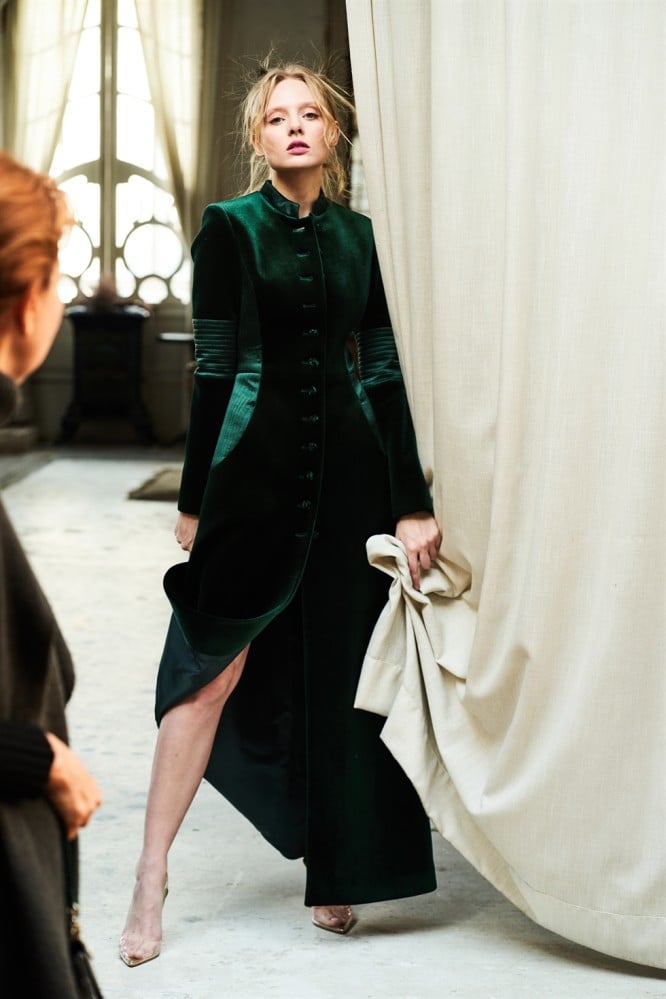
She also directs for various fashion venues and has designed costumes for musicals and events, such as the G20 Summit held in Seoul in 2010 and a fashion show for the Paralympic Winter Games in Pyeongchang in 2018.
Many of her pieces are inspired by her cultural background. Kim adopts patterns and fabrics from Korean traditions and turns them into something new. Her show at the Baccarat Museum in Paris in 2019 was inspired by a traditional Korean painting. She has also released 40 new haute couture dresses, some of which use only traditional fabrics and are inspired by traditional Korean moon jars (a type of Korean white porcelain).
Kim also recently collaborated with the Hyundai Motor Company to create sustainable clothes made from used car fabrics, while preparing a charity fashion show for disabled people.
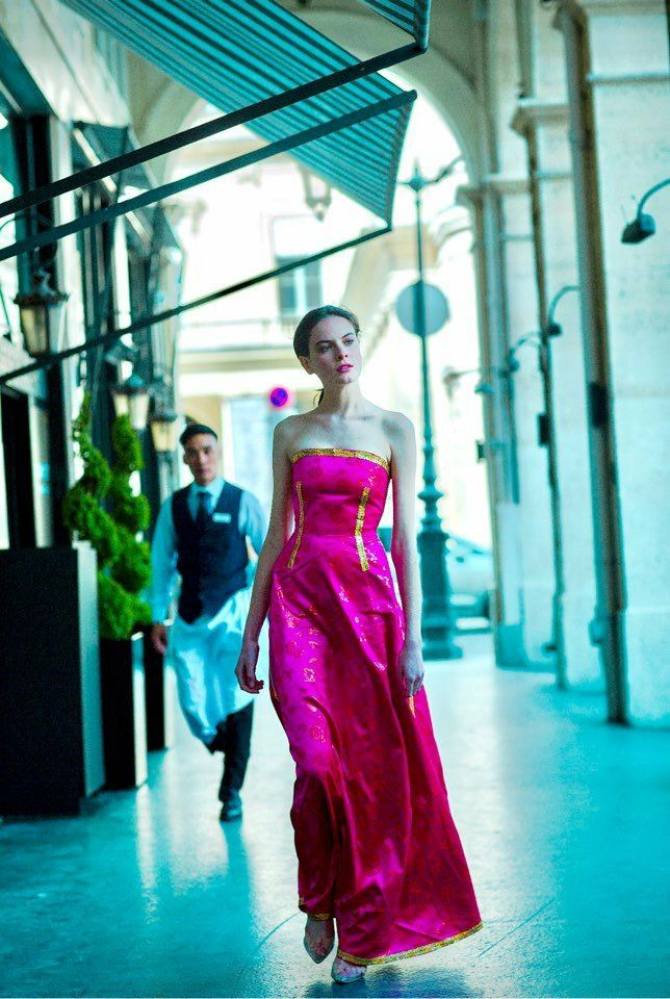
“There is a tough road ahead to create haute couture fashion, which is disappearing. I think we are in the middle of a change in fashion culture now. More people wear pyjamas during this era of social distancing, and fewer people wear tailored garments with accessories.
“The tendency of cultural convergence between so-called Western and Eastern cultures will become more common. Also, I expect that the concept of cyber human and actual human will also be mixed. I am planning to come up with high-fashion that can satisfy the new type of human; something both a robot and a human being can wear.
“I believe traditional art will be preserved like classical music. The beauty of haute couture will enable the style to stay alive, just like the way we admire the beauty of classics. I would like to create enduring pieces of art.”

